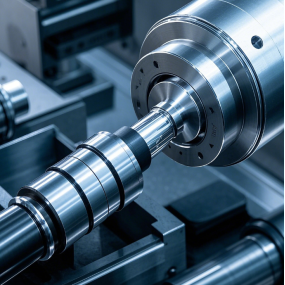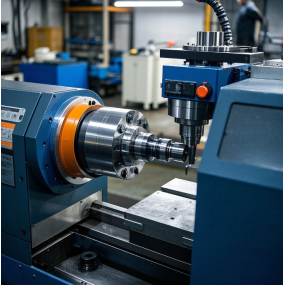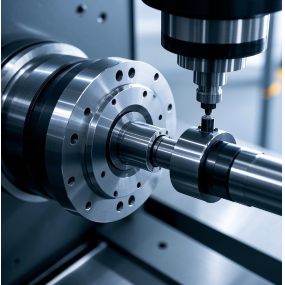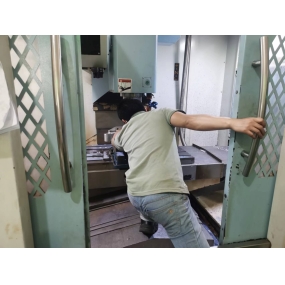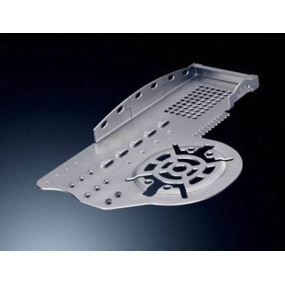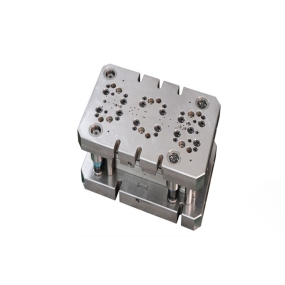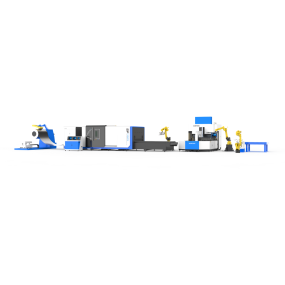Metal materials are divided into ferrous metal materials and non-ferrous metal materials. Ferrous metal materials include various steels, cast steels, and cast irons, which have good mechanical properties (such as strength, plasticity, toughness, etc.), are relatively inexpensive and easy to obtain, and can meet the requirements of a variety of properties and uses. Among all types of ferrous metals, alloy steels are often used to make important parts due to their excellent properties. Non-ferrous metal materials include copper alloys, aluminum alloys, bearing alloys, etc., which have the advantages of low density, good thermal and electrical conductivity, and can usually be used in applications with anti-friction, wear resistance, and corrosion resistance requirements.
 Non-metallic materials refer to plastics, rubber, synthetic fibers and other polymer materials and ceramics. Polymer materials have many advantages, such as abundant raw materials, low density, good elasticity in the appropriate temperature range, and good corrosion resistance. Its main disadvantage is that it is easy to age, many of which have poor flame retardancy, and generally speaking, poor heat resistance. The main characteristics of ceramic materials are extremely high hardness, wear resistance, corrosion resistance, high melting point, high stiffness, and lower density than steel. At present, ceramic materials have been used in structures such as seals, rolling bearings, and cutting tools. Its main disadvantages are relatively brittle, low fracture toughness, expensive, and poor processing technology.
Non-metallic materials refer to plastics, rubber, synthetic fibers and other polymer materials and ceramics. Polymer materials have many advantages, such as abundant raw materials, low density, good elasticity in the appropriate temperature range, and good corrosion resistance. Its main disadvantage is that it is easy to age, many of which have poor flame retardancy, and generally speaking, poor heat resistance. The main characteristics of ceramic materials are extremely high hardness, wear resistance, corrosion resistance, high melting point, high stiffness, and lower density than steel. At present, ceramic materials have been used in structures such as seals, rolling bearings, and cutting tools. Its main disadvantages are relatively brittle, low fracture toughness, expensive, and poor processing technology.
Composite materials refer to a new type of material that uses two or more materials with significantly different physical and mechanical properties to obtain the required properties through a composite process. For example, non-metallic materials such as glass, graphite (carbon), boron, and plastics can be composite into various fiber-reinforced composites. Plastic is attached to the surface of ordinary carbon steel plates to obtain high-strength and corrosion-resistant plastic composite steel plates. The main advantage is that it has high strength and elastic modulus, and the quality is particularly small, but it also has the disadvantages of poor heat resistance, poor thermal conductivity and electrical conductivity. In addition, the price of composite materials is relatively expensive. Therefore, composites are currently mainly used in high-tech fields such as aviation and aerospace. In civilian products, composites also have some applications.


 Spanish
Spanish Arabic
Arabic Spanish Basque
Spanish Basque Portuguese
Portuguese Belarusian
Belarusian Japanese
Japanese Russian
Russian Icelandic
Icelandic Bulgarian
Bulgarian Azerbaijani
Azerbaijani Estonian
Estonian Irish
Irish Polish
Polish Persian
Persian Boolean
Boolean Danish
Danish German
German French
French Filipino
Filipino Finnish
Finnish Korean
Korean Dutch
Dutch Galician
Galician Catalan
Catalan Czech
Czech Croatian
Croatian Latin
Latin Latvian
Latvian Romanian
Romanian Maltese
Maltese Malay
Malay Macedonian
Macedonian Norwegian
Norwegian Swedish
Swedish Serbian
Serbian Slovak
Slovak Slovenian
Slovenian Swahili
Swahili Thai
Thai Turkish
Turkish Welsh
Welsh Urdu
Urdu Ukrainian
Ukrainian Greek
Greek Hungarian
Hungarian Italian
Italian Yiddish
Yiddish Indonesian
Indonesian Vietnamese
Vietnamese 简体中文
简体中文 Haitian Creole
Haitian Creole

